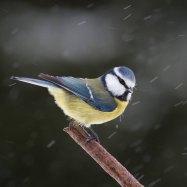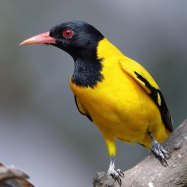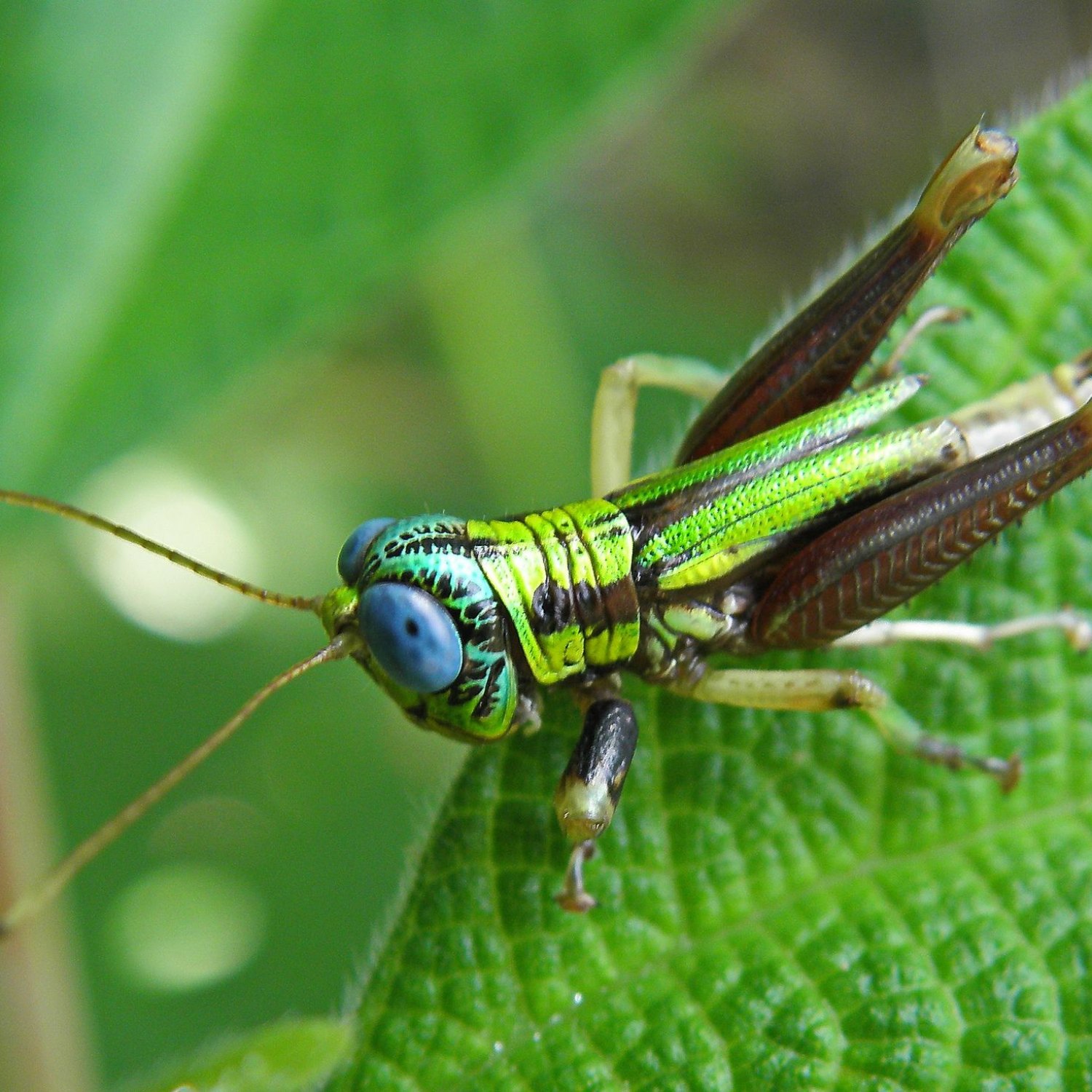
Cricket
0.6 to 2 inches (1.5 to 5 cm)
Did you know that crickets are part of the Gryllidae family? They may be small and compact, but they come in different sizes, ranging from 0.6 to 2 inches. These musical insects can be found in various locations worldwide and are known for their chirping sounds. #Animals #Crickets #Gryllidae #Nature
Animal Details Summary:
Common Name: Cricket
Kingdom: Animalia
Habitat: Grasslands, forests, and urban areas
The Fascinating World of Crickets: Nature's Tiny Musicians
Nature never ceases to amaze us with its diverse and wondrous creatures. Among the many inhabitants of the earth, there is one intriguing insect that has captured our attention for centuries: the cricket. These little creatures have fascinated and enchanted humans with their unique songs, physical features, and survival mechanisms.Crickets belong to the family Gryllidae and are known scientifically as Gryllus Cricket. They can be found in various habitats, ranging from grasslands, forests, to urban areas, making them a common sight around the world. They have been around for millions of years and have evolved to adapt to different environments, making them a robust and vital part of various ecosystems.
In this article, we will delve into the world of crickets, exploring their scientific classifications, habitats, feeding habits, distribution, and physical characteristics.
From Kingdom to Species: Understanding Cricket's Scientific Classification
To truly appreciate the magnificence of crickets, we must first understand their scientific classification. According to the principles of taxonomy, every living organism has a specific classification system that helps us identify and understand their place in the natural world.Crickets belong to the Kingdom Animalia, which comprises all animals. They fall under the Phylum Arthropoda, a diverse group that includes insects, spiders, and crustaceans. These tiny creatures fall under the Class Insecta, known for their segmented bodies, six legs, and external skeletons. Within this class, crickets belong to the Order Orthoptera, which translates to "straight wings," referring to the hardened forewings of these insects Codfish. Finally, crickets are classified under the Family Gryllidae, which includes over 900 species of crickets.
This classification may seem complex at first glance, but it helps us understand the unique characteristics and behavior of crickets and their relationship with other living organisms.
Where Do Crickets Live? Exploring Their Habitat
Crickets are found all over the world, with the exception of Antarctica. They are a common sight in countries like the United States, Australia, Africa, and Asia. Within these regions, crickets can be found in various habitats, including grasslands, forests, and even in urban areas.In forested areas, crickets prefer to live in cool and damp environments, hiding under logs, rocks, and fallen leaves. They can also be found in grassy fields and meadows, where they make use of the tall grass and plants for cover. In urban areas, crickets thrive in gardens, parks, and even in residential areas, as long as there is enough vegetation and shelter for them to survive.
These insects have adapted and evolved to thrive in different environments, making them a vital part of various ecosystems.
The Omnivorous Diet of Crickets: What Do They Eat?
Crickets are primarily omnivorous, meaning they consume both plant and animal matter. As juveniles, they feed on decaying plant matter, small insects, and even their own kind. As they mature, they transition to a more plant-based diet, feeding on fruits, seeds, and leaves. They also have a big appetite for aphids, which are tiny insects that feed on crops, making crickets valuable for controlling pest populations.In captivity, crickets are often fed a diet of fruits, vegetables, and commercial cricket food to ensure they receive all the necessary nutrients. These insects play a crucial role in the food chain, serving as a source of food for many predators like birds, reptiles, and even humans.
From Grasslands to Your Backyard: Understanding the Distribution of Crickets
Crickets are widespread and can be found in different countries around the world. They are most commonly found in tropical regions, where the climate is conducive for their survival. However, they can also be found in temperate regions, where they enter a state of hibernation during the winter months.The exact country of origin for crickets is unknown, as they have been around for millions of years, evolving and spreading to different parts of the globe. Today, they can be found in various countries, including the United States, China, Australia, and many parts of Europe.
The Incredible Physical Characteristics of Crickets
Crickets may be small, but they are packed with unique features that make them truly remarkable. One of the first things you will notice about crickets is their coloration, which varies among different species. Most crickets tend to have a brown or black color, which helps them camouflage and blend in with their surroundings.Their body shape is also something to marvel at. They are small and compact, typically measuring between 0.6 to 2 inches in length. They have six legs, four wings, and two antennae, which they use to navigate their surroundings and communicate with other crickets.
One of the most remarkable features of crickets is their ability to produce sound. This is achieved through a process known as stridulation, where they rub their wings or legs together to create a chirping sound. This is usually done by male crickets to attract female mates or to defend their territory.
Adaptable and Resilient: The Survival Mechanisms of Crickets
Crickets have been around for millions of years, and their ability to adapt and survive has played a crucial role in their longevity. One of their most remarkable survival mechanisms is their ability to hibernate. When temperatures drop, crickets enter a state of hibernation, known as diapause, where their metabolism slows down, and they become less active. This helps them conserve energy and survive through harsh conditions.Another impressive adaptation of crickets is their ability to jump, thanks to their powerful hind legs. This agility helps them escape predators and navigate their environment. Crickets are also known to have a unique ability to regenerate missing limbs, making them incredibly resilient.
In addition to these physical adaptations, crickets also have a keen sense of hearing, allowing them to detect vibrations and sounds and communicate with other crickets.
In Conclusion
The world of crickets is a fascinating one, filled with unique physical features, behavior, and survival mechanisms. From grasslands to forests, and even in urban settings, crickets can be found in various habitats, showcasing their resilience and adaptability.Amidst their small size, crickets play an essential role in maintaining balance in ecosystems, whether through their diet or as a food source for predators. They have been around for millions of years, and their survival and evolution are a testament to the magnificence and complexity of nature. So, the next time you hear the familiar chirping of crickets, take a moment to appreciate these tiny musicians and the wonders of the natural world.

Cricket
Animal Details Cricket - Scientific Name: Gryllidae
- Category: Animals C
- Scientific Name: Gryllidae
- Common Name: Cricket
- Kingdom: Animalia
- Phylum: Arthropoda
- Class: Insecta
- Order: Orthoptera
- Family: Gryllidae
- Habitat: Grasslands, forests, and urban areas
- Feeding Method: Omnivorous
- Geographical Distribution: Worldwide
- Country of Origin: Unknown
- Location: Various
- Animal Coloration: Varies, usually brown or black
- Body Shape: Small and compact
- Length: 0.6 to 2 inches (1.5 to 5 cm)
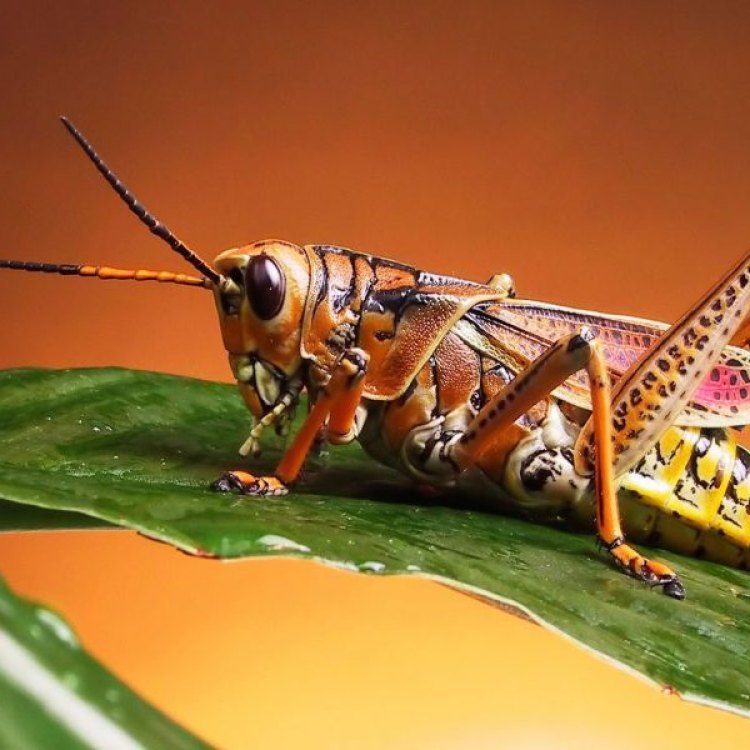
Cricket
- Adult Size: 0.6 to 2 inches (1.5 to 5 cm)
- Average Lifespan: 1 to 2 years
- Reproduction: Sexual
- Reproductive Behavior: Males produce loud mating calls
- Sound or Call: Chirping noise
- Migration Pattern: Non-migratory
- Social Groups: Solitary or live in small groups
- Behavior: Nocturnal, active at night
- Threats: Predators, habitat loss
- Conservation Status: Not evaluated
- Impact on Ecosystem: Important role in nutrient recycling and food chain
- Human Use: Farming and pet keeping
- Distinctive Features: Long antennae, wings in males, powerful hind legs
- Interesting Facts: Some species have the ability to produce sound by rubbing their wings or legs together
- Predator: Birds, spiders, reptiles, mammals
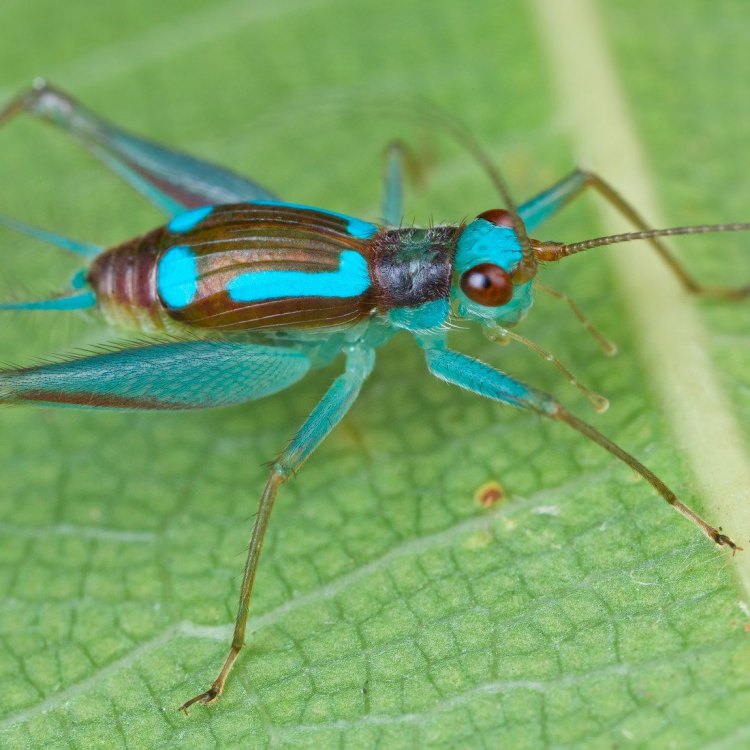
Gryllidae
The Fascinating World of Cricket: A Tiny Insect with Big Impact
When you hear the word "cricket," your mind may immediately conjure images of a popular sport played with a bat and a ball. But there is another type of cricket that is often overlooked but holds its own unique charm and importance in the natural world. We are talking about the insect, the cricket.The cricket, scientifically known as the Gryllidae family, is a small, fascinating insect found in grasslands, forests, and urban areas across the globe PeaceOfAnimals.Com. It has a long and intriguing history, and despite its tiny size, it plays a crucial role in the ecosystems and even in human activities. Let's dive deeper into the world of crickets and learn more about this remarkable creature.
The Basics: Size, Lifespan, and Reproduction
Adult crickets range in size from 0.6 to 2 inches (1.5 to 5 cm), depending on their species. They have six legs, two pairs of wings, and long antennae. Their bodies are divided into three parts: head, thorax, and abdomen. They have three pairs of jointed legs with sharp claws at the end, which they use for hopping and burrowing.Crickets have a relatively short lifespan, with an average of one to two years Common Buzzard. Their life cycle includes three stages: egg, nymph, and adult. The reproductive process is sexual, and the female cricket can lay up to 100 eggs at a time. Their mating behavior is quite unique as well. The males produce loud and continuous chirping noises to attract females. Each species has its distinct mating call, which they produce by rubbing their wings or legs together.
Behavior and Social Groups
Crickets are most active at night and are considered nocturnal insects. They are known for their chirping noises, which are used for various reasons. Male crickets use it for mating, while females use it to indicate their presence for mating or as a defense mechanism against predators. Some species can also produce different sounds to communicate with each other in groups.Crickets are either solitary insects, living alone, or live in small groups, depending on their species. They are not territorial animals, and therefore, do not engage in group fights. Instead, they prefer to live in close proximity to other crickets for protection and social interaction.
Threats and Conservation Status
Like many other species, crickets face threats in the form of predators and habitat loss. Birds, spiders, reptiles, and some mammals are the main predators of crickets. Birds, in particular, can be a significant threat as they can quickly sweep through an area and consume a large number of crickets in a short period.Additionally, as urbanization and human activities continue to expand, cricket habitats are being destroyed, leading to a decline in their population. Pesticides and insecticides used in agriculture also pose a danger to crickets. These chemicals not only kill crickets directly but also harm their environment and food sources.
Unfortunately, the conservation status of crickets is not evaluated yet. However, their significance in the ecosystem cannot be overlooked.
Impact on Ecosystem and Human Use
Despite their small size, crickets play a crucial role in the ecosystem. They are considered an essential part of the food chain, with many animals depending on them for food. As omnivores, they feed on a variety of organic matter, such as plants, smaller insects, and even dead animals. This makes them crucial in nutrient recycling, which is vital for maintaining a healthy ecosystem.On the other hand, humans have also found a use for crickets. Many cultures around the world consider them a delicacy and a source of protein. In some Asian countries, roasted crickets are served as a snack, while in Mexico, they are used in traditional dishes. In modern times, cricket farming is gaining popularity due to its high nutritional value, sustainability, and low environmental impact. Moreover, crickets are also kept as pets, especially in countries like China and Japan.
Distinctive Features and Interesting Facts
While all crickets may seem similar at first glance, there are specific features that set them apart. Crickets have long, thin antennae that are used to sense their environment, especially for finding a mate. The males also have wings, which they use for flying and producing their mating calls. In contrast, the female cricket's wings are shorter and do not produce any sound.One of the most interesting facts about crickets is their ability to produce sound by rubbing their wings or legs together. This process is called stridulation, and different species have their unique methods and sounds. For example, some crickets have specialized rows of teeth on their wings, while others have specially grooved legs to produce different sounds.
Predators of Crickets
Despite their small stature, crickets have their share of predators in the animal kingdom. As mentioned earlier, birds, spiders, reptiles, and some mammals can prey on crickets. However, they have evolved various adaptations to protect themselves against these predators. They have the ability to camouflage themselves in their surroundings, making it hard for predators to spot them. Moreover, some species possess spiny bodies, which provide them with a formidable defense mechanism.One interesting fact about crickets is that some species have the ability to "play dead" when threatened. When faced with danger, they will remain motionless, pretending to be lifeless until the threat passes.
The Importance of Preserving Crickets
It is essential to protect and preserve crickets for several reasons. As mentioned above, they play a crucial role in the ecosystems as nutrient recyclers and a vital part of the food chain. Moreover, their unique mating calls are an essential part of nature's symphony, adding to the beauty of the natural world.Conservation efforts for crickets should include preserving their natural habitats, limiting the use of harmful pesticides, and creating awareness about their importance in the ecosystem. As humans continue to expand our reach into nature, it is crucial to find a balance between our activities and the well-being of other living beings.
In conclusion, crickets may be small and often overlooked, but they hold an essential place in the natural world. From being a source of food to playing a crucial role in the ecosystem, these tiny insects have a big impact. It is essential to appreciate their presence and take steps to protect and preserve them for the future generations to come. So, the next time you hear the familiar chirping of a cricket, take a moment to stop and appreciate the wonders of nature's smallest creatures.
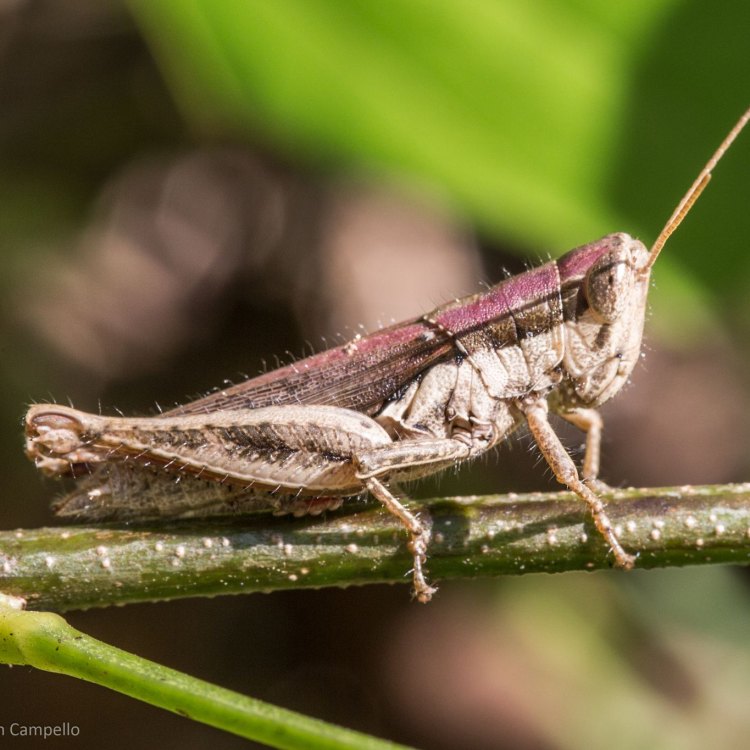
The Fascinating World of Crickets: Nature's Tiny Musicians
Disclaimer: The content provided is for informational purposes only. We cannot guarantee the accuracy of the information on this page 100%. All information provided here may change without prior notice.



